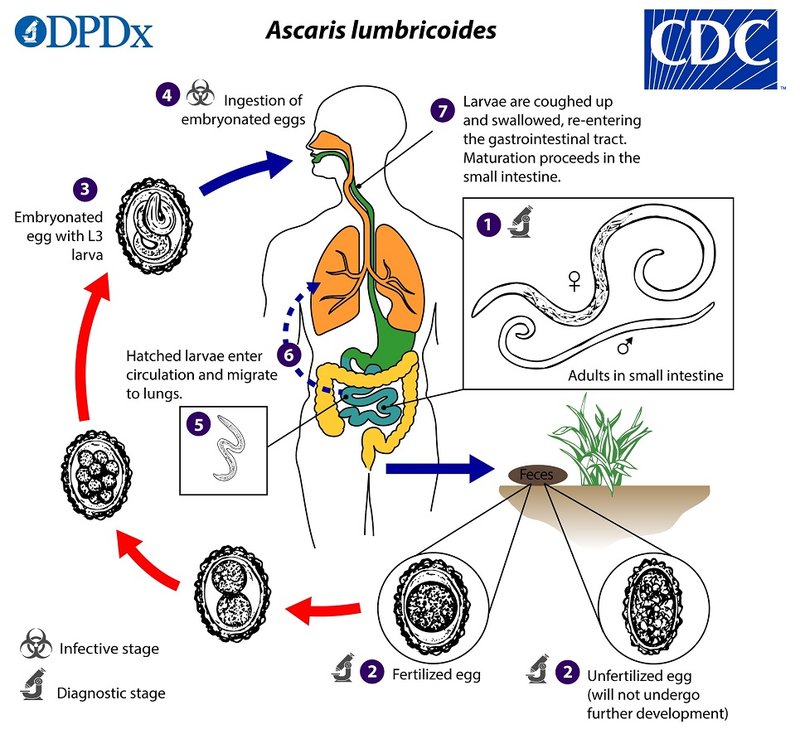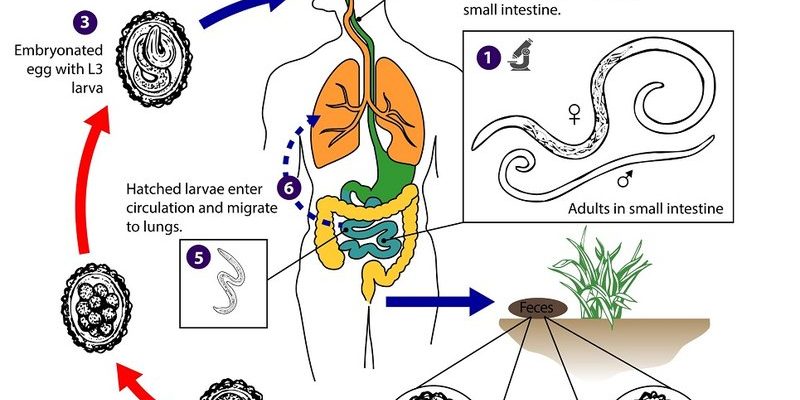
So, let’s grab a coffee and dig into the fascinating world of pinworms. Have you ever wondered how they feed or what they actually eat? Spoiler alert: it’s not as simple as grabbing a snack! Pinworms have some unique adaptations that help them survive. Here, I’ll break it down step-by-step so you can see exactly what’s happening inside when these little guys are on the prowl.
What Are Pinworms?
Before we dive into their feeding mechanics, let’s get to know our subject a little better. Pinworms, or *Enterobius vermicularis*, are small, white worms—usually about the size of a staple—that live in the human intestines. They’re especially common in children but can invade anyone.
These worms are most notorious for their nighttime antics. While you’re trying to get some beauty sleep, female pinworms venture out of the intestines and lay their eggs around the rear end. This process is what leads to that dreadful itching sensation. You might be wondering how they manage to thrive and reproduce in the first place. That’s where their feeding mechanisms come into play.
How Do Pinworms Feed?
Pinworms have a unique way of getting their food that’s tailored to their environment. They primarily feed on the contents of the intestines, mainly undigested food particles and the nutrients your body is processing. Think of the intestines as an all-you-can-eat buffet for these little guys! They don’t have a fancy mouth like we do—what they have is called a “buccal cavity,” which helps them latch onto the inner walls of the intestines to start feeding.
When they attach themselves, they use specialized structures called teeth to help scrape food particles off the intestinal wall. These aren’t teeth like ours, but tiny, hook-like structures that are effective for their needs. It’s almost like a little vacuum cleaner, sucking up whatever it can find.
The Role of the Digestive System
Now, let’s take a moment to appreciate the digestive system’s role in this process. The intestines are packed with nutrients from the food we eat, and this is essentially the pinworms’ grocery store. Imagine a bustling market where everything is ripe for the picking!
When pinworms feast, they absorb nutrients through their skin (or cuticle)—which is more permeable than our skin—directly into their bodies. This process allows them to quickly absorb essential nutrients to grow and reproduce. It’s a pretty efficient system!
Why Nutrition Matters for Pinworms
You might be thinking, “What happens if they don’t get enough food?” Just like any living creature, pinworms need a steady supply of nutrients to thrive. If they don’t get enough food, they can’t grow properly or reproduce effectively. Their life cycle depends on a constant intake of nutrients.
Typically, an adult female can produce thousands of eggs, and those eggs need to be nourished to ensure the next generation of pinworms can also survive. By feeding effectively, they contribute to a cycle that can continue quickly throughout a population. This is why getting rid of them can sometimes be a challenge!
Common Symptoms of Pinworm Infestation
Okay, so we’ve talked a lot about how pinworms feed, but why does it matter for us? If you or someone in your family has pinworms, it can lead to some pretty uncomfortable symptoms. Here’s what to look for:
- Itching around the anus: This is the most common symptom, especially at night when female worms lay their eggs.
- Restlessness during sleep: The itching can be so bothersome that it disrupts sleep patterns.
- Irritability: This might be due to lack of sleep or discomfort from the infestation.
These symptoms can be a nuisance, but identifying them quickly helps prevent the spread of pinworms, especially in households with children.
Treatment Options for Pinworms
If you suspect pinworms are causing trouble, you’ll want to take action. The good news is that treatment is usually straightforward and effective. Over-the-counter medications like mebendazole or pyrantel pamoate can help eliminate pinworms by killing the adult worms and preventing further reproduction. Here’s a step-by-step approach:
1. Consult a Healthcare Provider: Before starting any treatment, it’s best to check with a doctor, especially for children.
2. Administer Medication: Follow the instructions on your chosen medication. It’s crucial to treat all household members simultaneously to prevent reinfestation.
3. Practice Good Hygiene: Wash hands frequently, keep nails short, and clean bed linens regularly. This helps eliminate eggs and prevent spreading them.
Preventing Pinworm Infestation
Unfortunately, pinworms are contagious and can be tough to control. But don’t fret! There are several steps you can take to break the cycle and prevent future infestations:
- Wash hands regularly: Encourage frequent handwashing, especially after using the restroom and before eating.
- Keep household surfaces clean: Regular cleaning and disinfecting can help get rid of any lingering eggs.
- Avoid nail-biting: This can accidentally transfer eggs from the hands to the mouth.
By following these simple habits, you can significantly reduce the risk of getting pinworms in the first place.
Understanding how pinworms feed can give us valuable insight into how to deal with them effectively. Their specialized feeding mechanism allows them to thrive on our intestinal nutrients, making them persistent pests. However, with proper hygiene and treatment, you can take control and ensure that these little critters don’t become a part of your life.
So, the next time you hear someone say “pinworm,” you can confidently share what you know about their feeding habits and how to keep them at bay. After all, knowledge is power, especially when it comes to those sneaky little invaders!

